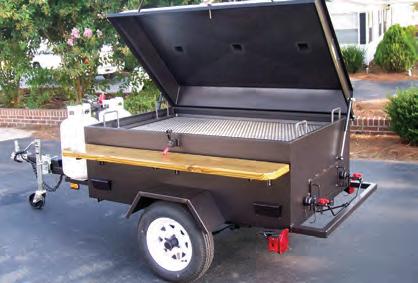










Now stronger and even more durable - the PENN® Battle® IV continues its tradition of being the workhorse of saltwater spinning reels. Newly upgraded with the Hydro Armor™ System and additional seals, the Battle IV is even more protected against saltwater intrusion and corrosion. An updated design eliminates through-holes in the spool body to further protect the reel from unwanted debris infiltrating its body and handle. Available in nine sizes and select high speed models, you can count on the Battle IV to have your back in any fight. PENN. LET THE BATTLE BEGIN™
By Ben Martin, Editor in Chief
Angling is more than just catching fsh—it’s a deeply rooted tradition that transcends generations, embodying a way of life, an art, and a profound source of pride. Tis pride isn’t merely in the size of the catch but in the entire experience, the skills refned over time, and the deep connection with nature.
Central to this pride is the mastery of technique. Whether it’s fy fshing in a mountain stream, casting a net in coastal waters, or patiently waiting with a rod and reel on a quiet lake, angling techniques require patience, practice, and a deep understanding of the environment. Anglers take pride in perfecting their skills—learning to read the water, understanding fsh behavior, and selecting the right equipment. Each successful cast, cleverly tied knot, and well-chosen lure is a testament to an angler’s dedication.
Te true pride in angling lies in the knowledge gained through experience. Seasoned anglers refect on the countless hours spent mastering their sport, from how a fy lands on the water to recognizing subtle signs of fsh activity. Angling is a journey of continuous learning, where each

trip ofers new lessons and insights, further fueling this pride.
Angling also nurtures a deep connection with nature. Being out on the water, enveloped in tranquility, allows anglers to develop a profound respect for the environment. Pride in angling is ofen linked to this connection, as anglers feel a sense of responsibility toward preserving waterways and fsh populations for future generations.
Tis respect for nature is vital to the angling tradition. Anglers ofen become conservation advocates, understanding that their sport’s enjoyment is tied to the environment’s health. Tus, pride in angling also includes a commitment to sustainable practices, ensuring that fsh stocks are maintained and habitats remain unspoiled.
For many, angling is a tradition passed down through generations. Te pride in angling is not just personal but a continuation of family or community heritage. Memories of fshing trips with parents or grandparents are cherished, and the skills learned are ofen passed on to the next generation. Tis sense of continuity creates a

bond that is both personal and collective, linking individuals to their past while forging connections with future anglers.
Te pride in being part of such a longstanding tradition is immense. Anglers feel a deep responsibility to honor the practices and ethics taught by their predecessors; ensuring the spirit of angling is preserved. Whether teaching a child to tie a knot, sharing stories of great catches, or passing on the secrets of a favorite fshing spot, the pride in angling is about nurturing a love for the sport that endures across time.












You’re looking at it! Furuno’s award-winning Radar gives you clarity & target separation like no one else. Don’t take our word for it. See for yourself. Scan here, and we’ll show you! DRS4DNXTDRS6ANXT





Selecting the right cast net is crucial for successful fshing. Here are a few tips to help you choose the best net for your needs.
1. Water Depth
Water depth afects the size of the net you should use. In shallow waters, opt for a smaller net with a shorter radius for easier control and retrieval. For deeper waters, a larger net covers more area, increasing your catch potential, but it may be harder to handle.
2. Targeted Fish Species
Te type of fsh you’re targeting determines the mesh size you need. Smaller fsh, like baitfsh or shrimp, require a smaller mesh to prevent escape. Larger fsh beneft from a larger mesh, which reduces water resistance and prevents the fsh from tearing the net.
3. Casting Ability
Your skill level should infuence your choice of net. Beginners should start with smaller,

lighter nets, which are easier to cast and control. Experienced anglers might prefer larger nets that cover more area, though they require more strength and technique.
4. Strength and Weight
may lack durability.
5. Mesh Size
Representatives from Tennessee Wildlife Resources Agency, Tennessee Department of Tourist Development, and Tennessee State Parks celebrate the ribbon cutting of the Bill Dance Signature Lakes project at the Bassmaster Classic in Knoxville on March 25, along with the project’s namesake. Photo Courtesy of the Tennessee Department of Tourist Development:
Balancing strength and weight is key. Te net must be strong enough to handle the catch but light enough for comfortable use. A heavy net can quickly become tiring, while a too-light net
Choose a mesh size based on the fsh species and environment. Smaller mesh sizes are better for small fsh, while larger meshes suit bigger fsh and allow the net to sink faster.
By considering water depth, target species, casting ability, and net strength, you can choose a cast net that enhances your cast netting success.






















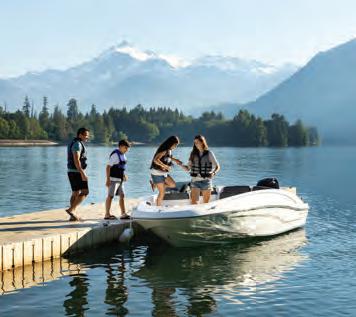





Embarking on the open water is an exhilarating experience, flled with the promise of adventure and relaxation. Whether you’re a seasoned sailor or a weekend cruiser, protecting your vessel with proper insurance is not just a choice—it’s a necessity. Explore the reasons why every boat owner should prioritize boat insurance for a worry-free voyage.
The open water can be unpredictable, with unexpected storms, collisions, or other potential accidents. Boat insurance can give you fnancial protection if there is damage to your vessel, providing coverage for repairs or replacement.
Accidents on the water can result in damage to other boats, docks, or even injuries to passengers. Boat insurance offers liability coverage, which can pay for damages or injuries you’re liable for while boating, up to specifed limits, and lawsuit costs if you’re sued. This includes damage you cause to another watercraft or if someone on or near your boat is injured and you’re found to be legally responsible.
Unfortunately, boat theft and vandalism are realities that boat owners face. Boat insurance has comprehensive and collision coverage that can protect you against events outside of your control, including theft and vandalism.
Accidents on the water may lead to injuries for you or your passengers. Boat insurance offers a range of optional medical payments coverage limits, helping to cover medical expenses if you are in an accident or someone is hurt on your boat, regardless of fault.
If you fnanced the purchase of your boat, most lenders require insurance coverage to protect their investment. Having boat insurance not only fulflls these requirements but also gives you peace of mind knowing that your fnancial interests are safeguarded.


Some water municipalities and marinas may require proof of insurance for docking or accessing certain areas. Boat insurance allows you the fexibility to explore different destinations without worrying about entry restrictions.
Emergency towing and assistance
Progressive boat insurance can include optional Sign & Glide® On-Water Towing coverage. If your boat is disabled or breaks down on the water, Sign & Glide® pays for on-water towing, jump starts, soft un-groundings, and fuel delivery.
Wreckage removal
If your boat sinks, Progressive boat insurance will cover the cost of removing your boat from the water (if removal is legally required).
Investing in boat insurance is not just about protecting a valuable asset; it’s about safeguarding the memories, experiences, and joy that come with your on-water adventures. Don’t let unforeseen circumstances disrupt your journey—navigate with confdence, knowing that Progressive boat insurance has you covered. Ensure a smooth and worry-free voyage, because when it comes to your boat, peace of mind is the ultimate luxury.
Scan to get a quote in as little as 4 minutes
learn more.




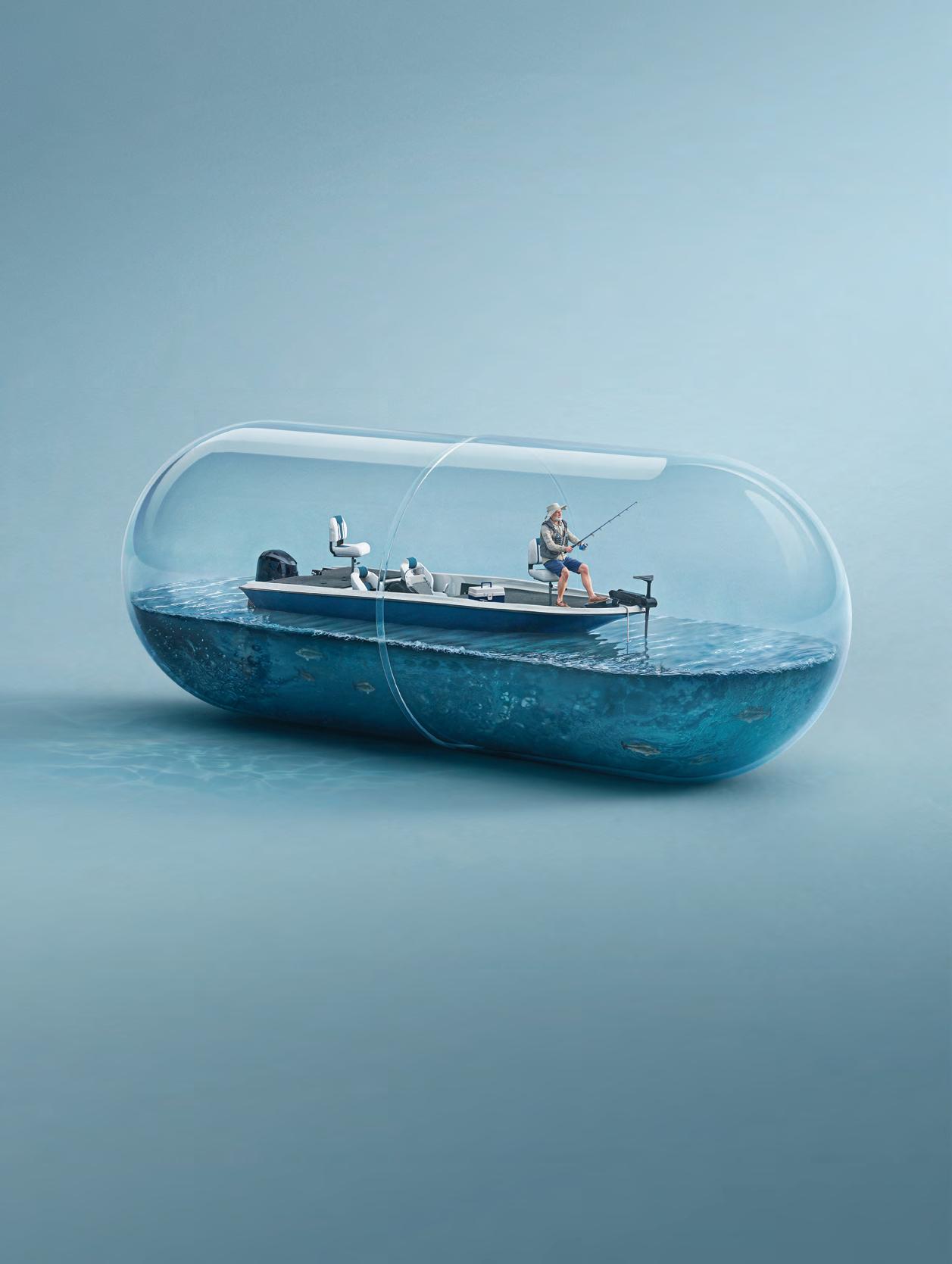


















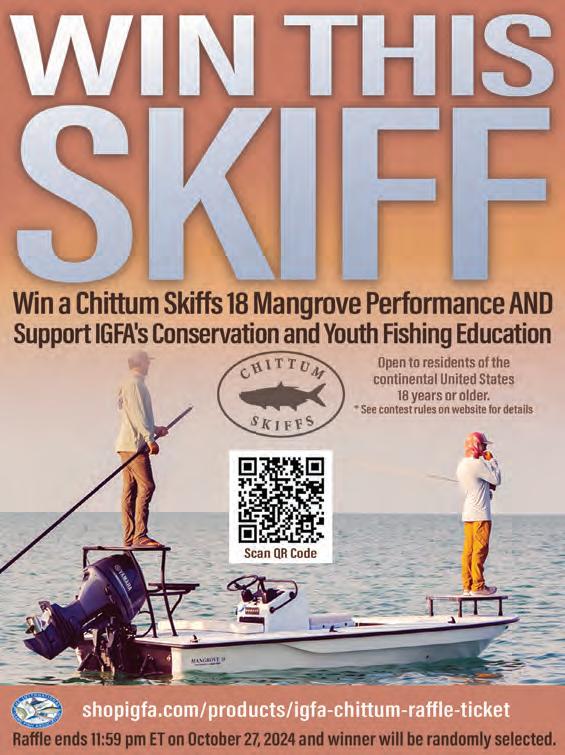



ITim Barefoot
t’s kinda like the old Byrds song “For everything, there is a season…”
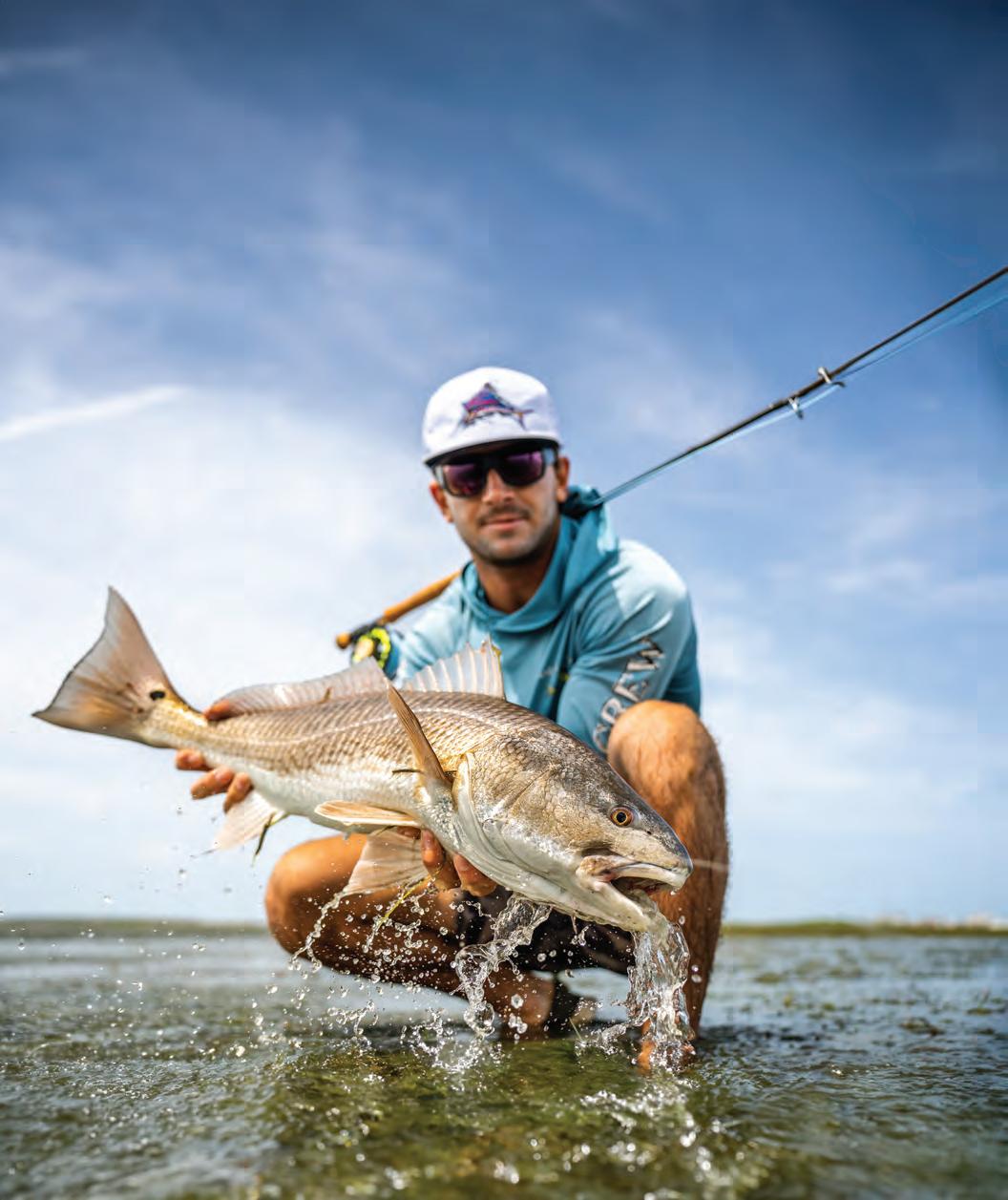

It could not be more true for the month of October, and the season for the shrimp, white shrimp to be specifc. Te (white) shrimp will start to “march” from the sounds towards the inlets and into the ocean. Tey will do this march against the current towards the ocean at night mainly. Tis is the very reason we fsh and catch shrimp at night. With the new LED lights, you can produce hundreds and even thousands of lumens with very low wattage/battery drain.
Do your own research, but I’ve found the Illumisea brand to be cost efective and super bright. When you fre up the lights, you will attract the shrimp. When you have the shrimp, you have the fsh. Pretty simple concept. I’m not saying the fsh will not eat mullets, menhaden, cigar minnows and sardines, or whatever is prevalent in your location, but what I am saying is they will key in on the shrimp and become pretty darn picky if there are a lot of shrimp present. Tey don’t have to be huge shrimp,
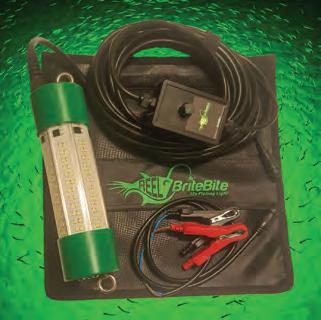
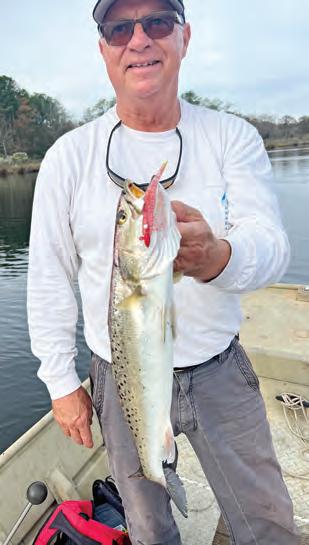
just a shrimp. I have seen really nice trout eating (keying on) the very small ones at times. If you can fnd the large 15-18 count then you’re good to go for whatever you want to catch. We call these “Tarpon Selects”. Everything in the water will eat these, from the average sized trout and drum to the largest snook and tarpon. Period. It’s the king of all baits, and October is the month to make the most of it.
For more information, visit barefootcatsandtackle.com and check out his YouTube channel.
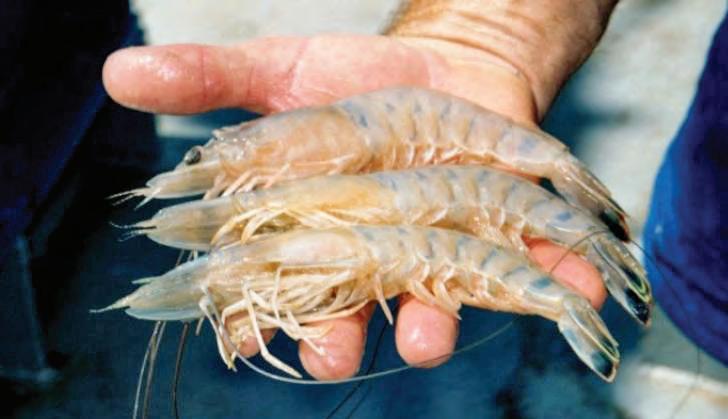
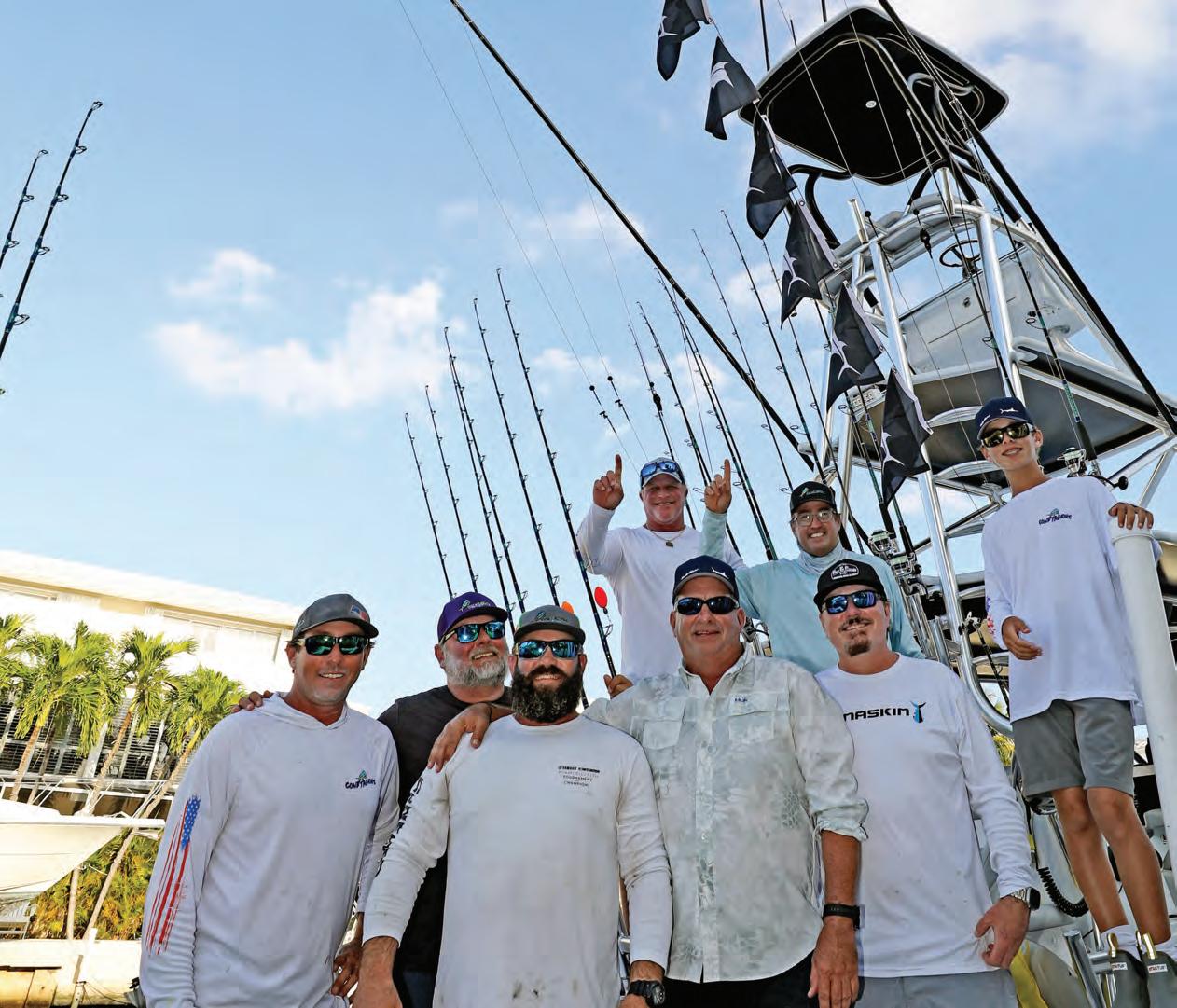
By David McGavock, TAM Certified Fisheries Biologist
Trolling or casting crankbaits can prove to be very effective for numerous species of fish. Largemouth, smallmouth, striper, hybrids and crappie will tend to position on the thermocline where water is rich enough in oxygen and cool enough to meet warmwater gamefish temperate comfort zones.
What is the thermocline? As the water gets deeper, it gets cooler as the sun cannot penetrate to these depths. It takes sunlight to produce oxygen in water in a process called photosynthesis. The sunlight cannot reach these depths so the water becomes cooler and the oxygen levels will begin to drop. The thermocline is the layer of water that the water is cooler and still has enough oxygen for fish to survive. You will often hear experienced or professional anglers say, we caught most of the fish on the thermocline at a depth they located on the fish finder. Freshwater fish depending on species are either warmwater, coolwater or coldwater species. Each has a temperature zone they are most comfortable to survive. Fish begin to stress when they are outside their proper
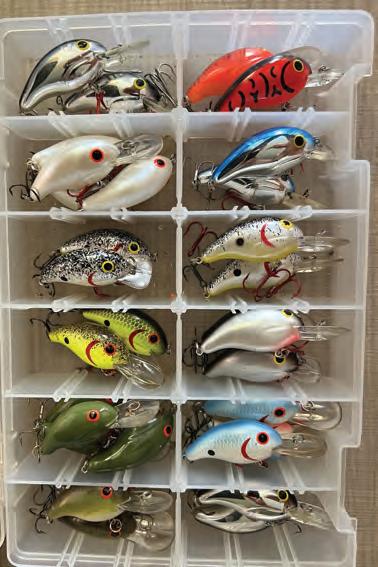


temperate zone. This stress can lead to weakening the slime coat which makes them susceptible to parasite, disease issues, and death.
A good quality fish finder can be very effective to locate the depth the fish are staging. Once the angler dials in and determines this depth on the fish finder then the proper crankbait is tied on to reach those depths by trolling or casting.
Once a school of deeper feeding fish are located it can be very good action. So the question becomes what lure and what color is the best. A variety of crankbaits of numerous colors and depth capability are needed to dial in on what works. Once they turn on to a certain color or action, it’s game on.
Fish may locate near structure in the deeper depths and others may school up along drop-off points or ledges. Also, they may be found in the main river channel schooling up around the thermocline.
Trolling or casting crankbaits at the proper depth can produce some nice catches in the fall of the year. Enjoy the great outdoors!



By Captain Greg Grogan
There’s nothing more exciting than seeing the surface water come alive with fish busting and gorging on surface schools of shad. These fish are a lot of fun to catch and can be extremely aggressive and other occasions ignore every lure you present to them. When everything comes together, this can be the most awesome fishing that an angler can dream of!
As the water temperature drops with cooler nights in October, threadfin and gizzard shad continue their migration to shallow flats and to the back end of the major creeks. Bass are not far behind. Look for schools of surface baitfish on flats around vegetation, shallow wood cover, and in the back half of the feeder creeks where the bottom begins to shallow up and flatten out. This time of year baitfish will spread out in the water column on cloudy days and be in tight schools close to the surface on sunny days.
The normal rule in fishing is to match the hatch but it can take a different approach for a consistent bite. Casting larger baits can get more bites and catch larger fish. Normally, shad imitating colors are the best choice but throwing contrasting colors can be effective too. Experiment with different bait sizes, colors and retrieve speeds until you get the fish to react.
Good lures choices in this situation are lipless and square bill crankbaits, weightless flukes, swimbaits, topwaters and underspins. These fish can drive can drive you crazy as they "blow up" out of casting range and the angler can spend a lot of time chasing them around. The key is having patience and

making accurate casts right in the middle of the surface activity. Get out this fall and give these techniques a try and I promise that you will enjoy going "Back to School"!
Greg Grogan is a USCG Licensed Captain and Guide in Middle Tennessee and North Alabama for crappie and bass and can be reached at 931.993.4348 or GregGroganFishing.Com
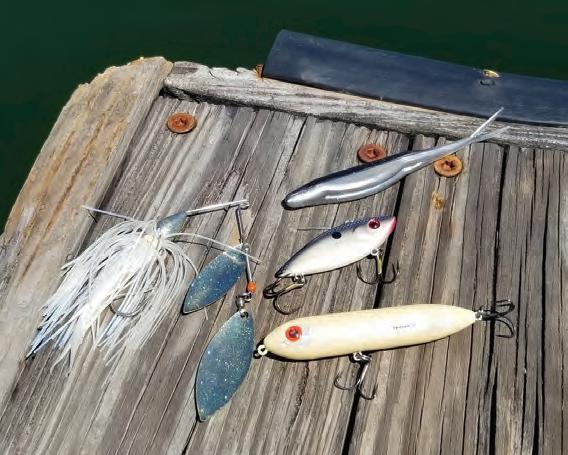


By David McGavock, TAM Certified Fisheries Biologist
Threadfin and gizzard shad are the primary food source for many reservoir species of game fish. Threadfin start showing up at reservoir dams in July and the gizzard shad follows a few weeks later in early August. And this is the time, it is on. A Foley Spoon or popper is a good lure choice when the explosion of feeding fish occurs on surface schools of baitfish.
Many anglers search for the early morning and late afternoon birds diving on the surface schools of threadfin and gizzard shad. Once located, they position themselves just beyond the chaos and tie on a Foley Spoon or popper to mimic the shad and the cast and retrieve of popping or chugging the bait near the school is on. Used properly, this can be one of the best techniques to catch these aggressive feeding fish on baitfish schools.
Top water is one of the most enjoying ways to catch largemouth, smallmouth, hybrid and striper. Many of the fish will follow the baitfish and once they decide to feed, the frenzy begins driving the bait to the surface and blowing up on its prey. It is a sight to see and stirs the excitement of any angler. They know they are in the fish.
With most lures, the angler casts beyond the location of where the fish might be and works the lure to the target spot. With popper fishing, the angler wants to place the cast directly where the fish are. Try to cast it as accurately as you can directly into to the hot spot. Once the hook up occurs, it can be any variety of fish species and sometimes that monster begins to peel the drag.
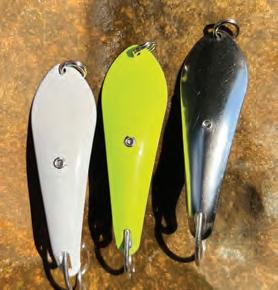
Big fish follow bait schools. A properly set drag is essential as you never know what might take the lure and become a long fight to the net.
The schools of baitfish are congregating and it can be an easy way to locate concentrated aggressive feeding fish. Try to locate the schools of shad and get into some hot action. Enjoy the great outdoors!






By David McGavock, TAM Certified Fisheries Biologist
Manyanglers favorite time of year to catch crappie is October. It’s the perfect fishing weather. Crappie love structure. In the fall, crappie move from the deeper water and stage in structure. Depths can vary but try to locate good structure.
One technique for crappie proven effective is to locate structure and slow roll a Charlie Brewer Whirly Bee. There are two styles which are the old school Whirly Bee and the Pro Whirly Bee. Colors are available in a wide variety but white, purple, and Tennessee shad are the most popular. This bait can be effective on largemouth, smallmouth, and white bass as well.

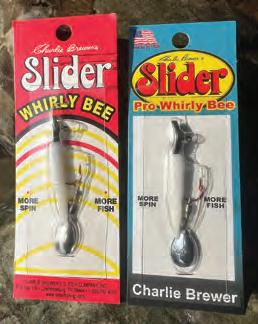
The key is a slow retrieve. It takes some practice of turning the handle slow enough to keep the lure moving. If you have ever fished with an experienced angler who knows how to slow roll a Whirly Bee, it can be quite the education. A slight flutter and flash of the lure occurs close to the structure and can trigger the strike to even the most finicky fish. Many crappie anglers use live minnows with a float on one rod and cast the Whirly Bee. Countless times, the Whirly Bee outproduces a stick float and minnow as the action entices the fish to eat it.
Charlie Brewer Slider Company is well known for making lures that teach finesse style fishing. Teaching the technique is on the packaging. It’s about finesse and enticement to trigger the strike. A little shake of the rod tip as you slow roll the Whirly Bee can increase the catch rate. A light line and good crappie rod with the right action is essential.
Most experienced anglers know crappie are called the paper mouth. The mouth is very easy to tear loose from the hook. This produces a high catch loss rate if the angler is too aggressive on getting the crappie to the boat or bank. When you get the hook up, bring the crappie in slow and steady. If you ever need to use a net, crappie are the species to do it on. They are the best eating fish in southern waters and rival very close to walleye and sauger in taste. So, the last thing the angler wants is to lose the prize eating fish.
October is a good month to catch crappie. Give the Charlie Brewer Whirly Bee slow roll a try on your next fishing trip. The Whirly Bee can be obtained by contacting the Slider Fishing Team at 1.800.762.4701. Website orders are also available at sliderfishing.com.
By David McGavock, Wildlife Biologist
Squirrelhunting is how most hunters get introduced to hunting in their youth. The southern tradition is normally past down from generation to generation.
Fond memories of those first hunts laid the groundwork to a future hunter or nature lover of many species of wildlife.

In the south, hickory trees are the key to locating squirrels. Four species of hickory trees are the most common in the southeast and include mockernut, shagbark, pignut and bitternut. Hickory nut cuttings below a tree was a good sign to take a quiet sitting position and wait out the quarry. A good ear to listen for hickory nut cuttings falling to the ground can be very effective. Once the tree is located, a sharp eye for movement of a squirrel can help bag the game. Many experienced hunters learn the vocalization of the squirrel and quickly know the distinct barking and chattering sound which can tell a hunter

they are in the right location.
So many nature experiences and education occur while on a simple squirrel hunt. The sights and sounds of birds, a hawk capturing its prey, or a deer walking close by in the woodlands can be an eye opening and enjoyable experience. Understanding how to identify the trees, plants, nuts and fruits that your quarry survives on in its daily diet is essential. This experience can open a whole new world and create a nature lover for life.
Squirrel season is open so check your state guidelines on season dates and bag limits. Enjoy the great outdoors!






By David McGavock, Fisheries Biologist
AquaticWeeds &Algae Control
Fertilization & Shading
Aerator and Fountain Installation


White Amur or commonly known as Grass Carp are stocked in lakes and ponds to control aquatic weeds and algae. They have to be sterile by law in most states and can be the silver bullet to controlling many types of evasive aquatic weeds and problematic algae.
As a general rule, they are stocked 5 to 10 per acre if the lake or pond is moderately infested with aquatic weeds and algae. If the lake or pond is heavily infested with weeds and algae then its best to stock 10 to 15 per acre. They are typically sold at 8 to 9 inches in length. They can eat their weight in a day and become very effective by year 2 of controlling unwanted aquatic weeds and algae.

White amur must be kept in the basin of the lake or pond. They are riverine fish and will follow the flow of the current. It may be necessary to have an outflow pipe cover which allows water to flow out but prevents the white amur from escaping. In certain types of construction, lakes and ponds have an emergency spillway to allow excessive water to flow out. In this type of lake or pond construction, a spillway barrier will need to be constructed to stop the white amur from escaping the lake or pond.
Make sure you stock white amur that are large enough not to get predated on by large bass or catfish. If these larger bass and catfish exist in your lake or pond consult with your supplier. White amur are available to purchase in different grade sizes such as 8 to 9”, 10 to 12” and 12” and above. So, don’t throw your money down the drain by purchasing white amur that are too small and get eaten up like M&M’s just days after you stocked them.
Grass Carp are effective for 5 to 7 years and the lake or pond owner will need to restock. Once they get toward the end of their life cycle, their metabolism slows down and they do not eat as much and become ineffective.
It is much more cost effective to control aquatic weeds and algae with white amur than expensive chemicals. They do not consume duckweed or watermeal. Proper plant identification is essential to know if white amur will control the type of aquatic weed you have in your lake or pond. Consult with a professional to identify the aquatic weed for best results.

By David McGavock, TAM Certified Wildlife Biologist
Proper land management practices require a multitude of equipment, storage, maintenance and insurance. These are the tools of the trade. A good dealer or agent is essential to help the land manager to complete the tasks or objectives, provide parts and service when needed and protect the land manager’s investment. The land manager must choose wisely when they make the purchase from a reputable and reliable company. Not only at the point of the sale but long term as well.


A good tractor is essential for mowing, disking, spreading lime, fertilizer and seed. Other tasks, such as road maintenance, installing culverts, removing fallen and downed trees, moving and spreading soil, rock and gravel is a must to access on the property. Discuss your use of the tractor with your dealer to ensure you have enough horsepower to get the job done. A variety of styles and models are available to meet your land management tasks. Good quality farm implements such as a mower, disk and spreader are a must for proper wildlife land management practices.

Side by sides, four wheelers and a trailer can come in handy for the loading and transport of tools, chainsaws, fertilizer, minerals, feed and seed to various locations on the property. Often, there are game feeders and game cameras spread out throughout the property and these machines can be very handy to place and check the cameras, carry the feeder and feeds to access the precise woodland locations. Many times these locations when dealing with wildlife plantings can be through old logging trails or just through the woodlands of the property. These machines can come in handy in hard to get to locations to perform wildlife land management practices. Once big game are harvested, they can save a bad back by easily getting the quarry out of the woods to the truck.
Storage of your equipment, tools and supplies is a much needed requirement to protect your investment and keep everything safe and secure. Equipment buildings can be used as a maintenance shop to do needed repairs. These buildings can be quite useful as hunting cabins for your overnight or several day stay on the property for the hunts or land management work days. Many hunting clubs use these facilities as a weekend place to stay while placing or working on shooting houses, tree stands, road maintenance and plantings of wildlife warm and cool season food plots. These plantings can improve the habitat to draw more game on the property and make the success of the hunt increase dramatically. Hunting cabins can also
be a gathering place to socialize and barbecue while the tasks of the work day have been completed.
Good insurance on your tractor, recreational vehicles, hunting cabins and equipment storage buildings are essential. Weather damage, accidents and theft can be costly, so always have everything of value insured and your investment protected.
Hunting season is well under way and the gun season is approaching for numerous game species. Deer, fall turkey, waterfowl, rabbit and quail hunting is a southern tradition past down from generation to generation. Take to the woods and enjoy the outdoors!


By David McGavock, TAM Certified Wildlife Biologist
Soybeans are a warm season legume and provide very good nutrition for whitetail deer. Depending on soil fertility, soybeans provide 20 to 30% protein for whitetail deer. This level of protein maximizes optimal body growth and antler development at a time when whitetail need it the most.

Deer love soybeans and can often be seen feeding on them for hours. Experienced whitetail hunters refer to soybeans as the ice cream plant for deer. Early development of the bean pod is when deer devour the soft, palatable, and nutritious food source. If the whitetail population is quite high, deer can create a lot of damage to agricultural soybean farming operations. Many state wildlife departments issue crop damage permits to harvest deer year round. An inspection will be made by wildlife officials and the deer browse on the plant is easily observed. In events of extreme damage to the crop, permits will be issued to reduce and control the deer population on the property.
Planting soybeans has become quite popular with wildlife land management practices. Typically, the land manager will plant soybeans about a month after the last frost in early spring. Soil temperature needs to be a stable 60 degrees for best results.


The biggest issue is keeping grasses and broadleaf weeds out of the warm season plantings. Some properties may have grass issues and others, broadleaf may be the primary weed issue. On some properties, it can be a combination of both weed species. Timing your herbicide applications is critical to control weeds and avoid spraying when soybeans begin to flower.
There is no doubt whitetail love beans and it can be a choice spot to early season scouting to locate trails and paths from the woodlands and thickets to soybean fields. Set your ladder stand, tree stand or shooting house up early so the deer will get use to it. This can be a hot spot for harvesting that trophy buck or just simply putting venison on the table. Whitetail deer archery is open and gun season is approaching, so try your luck near the beans. Enjoy the great outdoors!






Fall fshing ofers anglers a perfect blend of cooler weather, stunning scenery, and active fsh. As summer fades, the changing conditions in freshwater and saltwater environments create ideal opportunities to catch a variety of species. Whether in lakes, rivers, or coastal waters, autumn provides some of the most rewarding experiences for fshing enthusiasts.
One reason fall is excellent for fshing is the behavior of fsh during this season. As water temperatures drop, fsh become more active, feeding aggressively to prepare for winter. In freshwater, species like bass, trout, and walleye move into shallower waters, making them easier to target. Bass, in particular, hunt more during the fall, feeding on schools of baitfsh in cooler, oxygen-rich waters.
Largemouth and smallmouth bass gravitate toward areas with abundant food sources. Anglers ofen succeed using lures that mimic baitfsh like shad and minnows. Crankbaits, jerkbaits, and sof plastics, especially in natural prey colors, are popular choices. Fishing near structures like submerged logs, rock piles, and weed beds can increase your chances of landing a big one, as bass ofen use these areas as ambush points.
Trout fshing also peaks in the fall, with cooler water temperatures bringing these fsh into more accessible parts of rivers and streams. Fly fshing is particularly efective during this time, as trout are more likely to strike at dry fies and nymphs resembling the insects they feed on. In many regions, fall is also the time for spawning runs, particularly for salmon and steelhead, ofering anglers a chance to catch them in large numbers amid stunning autumn scenery.
In saltwater, fall is synonymous with the migration of popular species like striped bass, bluefsh, and redfsh. As these fsh move along coastlines, following baitfsh like mullet and menhaden, they ofer exciting opportunities for surf and boat fshing. Te fall mullet run is a
I’ve spoken with and interviewed many anglers during my career as an outdoor writer. One of my favorite questions is, “Do you remember the frst fsh that you caught?” It’s amazing to me how many anglers do in fact remember the very frst fsh that they ever caught. Most recall every element involved in that frst catch. All seem to instinctively smile when recounting the event. It’s a fond memory, one that glistens each time it’s retold.
Tis right of passage can occur at any age. For me I was four years old standing beside a small pond with a cane pole, red and white bobber and baited hook in the water, with my dad kneeling beside me. I remember that it was a sunny day and that we were both smiling.
As the bobber went under my dad said, “Catch him, Son!” and I instinctively raised the cane pole to bring the brim to my dad’s reach. We put the fsh in a metal bucket full of water and I stared at it and observed it the entire ride home. I remember how proud my dad was as he shared the story of my catch with the rest of our family, and thus began a lifetime of catches and smiles and fond memories and a sense of pride and accomplishment. A lifetime of those wonderful elements thanks to my dad.
Teach a kid to fsh. Tey’ll likely never forget you, and you’ll likely change their life for the better.

highlight for many saltwater anglers, drawing large predatory fsh close to shore where they can be targeted from the beach or pier.
For those targeting striped bass, the cooler fall waters bring these fsh into the shallows, making them more accessible to surfcasters and inshore anglers. Live bait like eels or bunker is ofen the go-to choice, but lures like topwater plugs, sof plastics, and bucktails can also be efective. Te sight of a striper smashing a surface lure in the crisp autumn air is an experience that keeps many anglers coming back year afer year.
Another advantage of fall fshing is the relative solitude. With many focused on hunting or other seasonal activities, fshing spots are less crowded than during the summer. Tis allows for a more peaceful experience, where you can fully immerse yourself in nature. Te vibrant fall foliage, combined with the quieter atmosphere, creates a perfect backdrop for a day of fshing.
Overall, fall fshing ofers something for every angler. Whether chasing bass in a quiet lake, casting for trout in a mountain stream, or battling gamefsh along the coast, fall provides unparalleled opportunities to connect with nature and enjoy the thrill of the catch.
By John Mosley


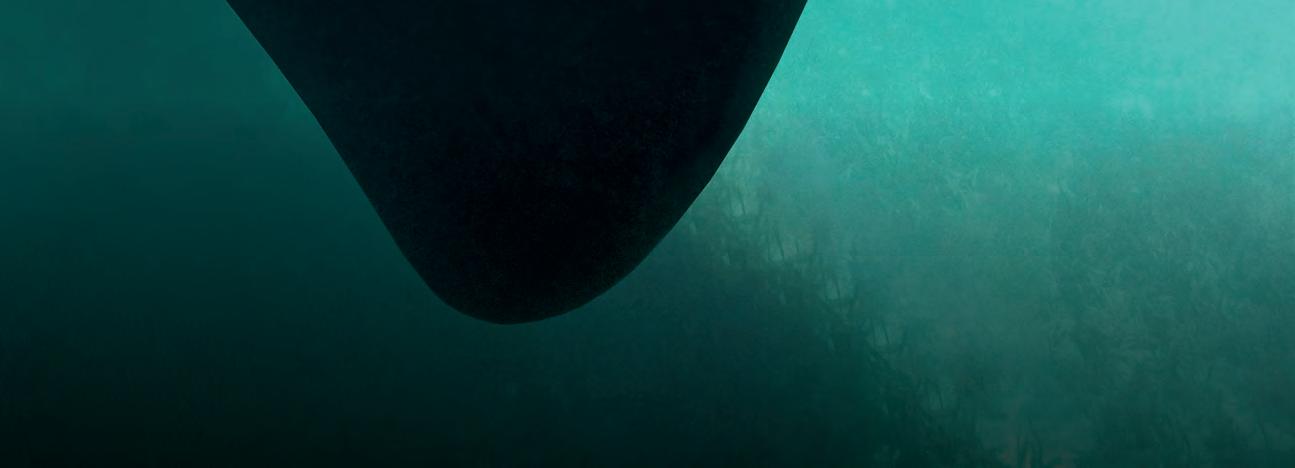


Relentless performance for every yacht, everywhere, every time. It is so much more than just bottom paint.
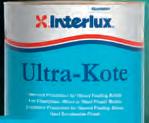







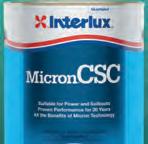



Interlux’s range of fouling control products not only improves your performance by protecting your hull from fouling, they also protect against the spread of invasive species, safeguarding your local waters when exploring new regions, therefore helping you make a difference by looking after the waters that have provided you with enjoyment and freedom for so many years.
Like you, we have a passion for boating. We provide boaters the hull protection they deserve with over 140 years of cutting-edge science, technology and expertise. You can expect only the best from every Interlux yacht paint product, providing you the confidence to explore your world.
Early morning fog and dropping water temperatures are a sure sign fall is near.

Yes, it’s that time of year when the big sheepshead and cool water redfsh invade the local deep-water docks and structures. Both species are tough opponents, challenging even the most skilled anglers.
Sheepshead are most likely to be found around docks where subsurface pilings are covered in marine growth like oysters and limpets, and where tiny crabs live inside. Extreme submerged structures such as rock outcrops or limestone ledges are good too.
Tis time of year, seek the larger redfsh around deep water docks where white bait and pinfsh congregate for protection, becoming a plentiful quarry. Both reds and sheepsheads like to use the current that brings food naturally in their direction, possibly using the pilings as an ambush point from which to launch their attack. Look in the proximity of extended dock systems and/or rough shoreline structure; lots of the bigger fsh are caught here.
Tiny crabs or sand feas will produce great sheepshead action. Live shrimp cut in half are my next “go to” bait. Seek docks with at least eight feet of water (10’ to 14’ is ideal). Cast to the base of the pilings. Ten tighten the line to feel the bite.
Small freelined pinfsh or live whitebait are great for reds as the water cools thru early October.
My neighbor Jerry claims, “Redfsh hate pinfsh. Tat’s why they are such good bait.”

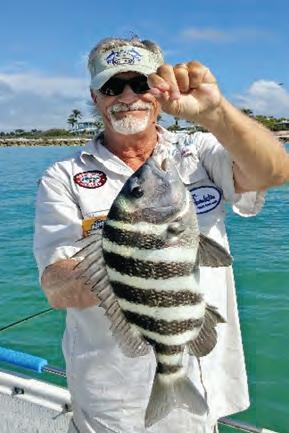

By CAM Staf
Anglers have long observed that fsh activity is infuenced by the lunar cycle, giving rise to what are now known as lunar tables. Tese tables serve as invaluable tools for predicting when fsh are most likely to be active and feeding. But how do lunar phases afect fshing, and how can anglers use lunar tables to their advantage?
A lunar table provides information on the moon’s phase and its position relative to the Earth and the sun. Tese factors signifcantly afect tides, which in turn infuence fsh behavior, especially in coastal and tidal waters. Te moon’s gravitational pull creates tides, and as the water moves, it stirs up nutrients and prey, encouraging fsh to feed.
Beyond tides, fsh have a circadian rhythm that governs their daily activities, including eating and resting. Many species, especially saltwater
“Really?” I said, “Reds hate pinfsh?”
“Yeah”, he said, “Pinfsh eat the redfsh eggs and the reds hate them.”
Now that’s some good information right there! I laughed and replied, “I did not know that!”
Oh well, to each his own.
OK, Jerry, if you say so.
I guess I’ll have to believe him because they do work well.
Cut ladyfsh tightlined on the bottom is always good.
Cooling fall waters are great for many species which include pompano, mackerel, sheepsheads, trout and reds. Find some good structure or a vacant dock and give it a go.
I wish for you a most enjoyable and productive day on the water while in pursuit of your fall quarry.
Capt. Russ Walker is a USCG Masters licensed fshing guide and owner of Tide Walker Charters out of Cape Coral, FL. www.tidewalkercharters.com.
fsh, also follow a lunar rhythm directly infuenced by the moon’s phases. Fish tend to be most active during the new moon and full moon phases, when tidal movements are more pronounced and feeding conditions improve.
1. New Moon: During the new moon, when the moon is between the Earth and the sun, strong “spring tides” occur due to the combined gravitational forces of the sun and moon. Tese heightened tides trigger more active feeding, particularly inshore and near tidal fats.
2. Full Moon: Like the new moon, the full moon also causes strong spring tides. Fish, especially predators, are more active at night during this phase, taking advantage of the increased light for hunting.
3. First and Last Quarter: Tese phases generate weaker “neap tides,” with less pronounced tidal changes. Fishing can still be productive, but fsh activity is generally reduced compared to the new and full moon phases.
Lunar or solunar tables break down the moon’s infuence into specifc time slots for optimal fshing, categorizing them into “major” and “minor” feeding periods. Major periods occur when the moon is directly overhead or underfoot, while minor periods happen when the moon is on the horizon. Major periods generally result in higher fsh activity, although both are useful for timing fshing trips.
Most lunar tables are simple to read, ofen color-coded for clarity. High fsh activity times may be highlighted in green or red, while less favorable periods might appear in blue or gray. By planning your fshing trips around these prime times, you can increase your chances of success.
However, lunar tables are just one factor among many. Weather, water temperature, and the habits of specifc fsh species also play crucial roles. For instance, overcast conditions during a full moon can reduce visibility, hindering feeding, while high winds or changing barometric pressure may alter fsh behavior.
Lunar tables are a valuable tool for anglers seeking to maximize their success. Understanding the moon’s phases and their efect on fsh behavior, especially during new and full moon phases, can help you plan fshing trips during peak activity periods. Although they don’t guarantee a catch, combining lunar tables with local knowledge and weather conditions can signifcantly enhance your chances of a productive day on the water.
Introducing kids to the sport of hunting through squirrel hunting can be an excellent way to nurture a lifelong appreciation for nature and outdoor skills. Squirrel hunting ofers a relatively safe, manageable, and rewarding experience for young hunters. Tese small game animals are abundant and found in many habitats, providing ample opportunities for success, which is crucial for keeping kids engaged.
Squirrel hunting teaches essential hunting skills such as patience, observation, and marksmanship. Because squirrels are agile and quick, young hunters learn to move quietly and hone their ability to spot subtle movements in the trees. Tese skills are foundational for all types of hunting, making squirrel hunting a great starting point.
Moreover, squirrel hunting emphasizes safety and ethics, as kids learn to handle frearms responsibly, understand hunting laws, and respect wildlife. Parents and mentors can use this experience to instill values like conservation, teaching kids about sustainable practices and the importance of preserving natural habitats.
Te physical demands of squirrel hunting are also suited for young hunters. It typically involves moderate walking and the excitement of a successful hunt is an excellent way to build a child’s
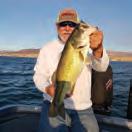


confidence and interest in the outdoors.
By Benjamin Babcock
Overall, squirrel hunting is not only a gateway to the broader world of hunting but also a meaningful way to bond with children and introduce them to the principles of responsible, ethical, and sustainable hunting practices.
Te .410 over-under shotgun is an excellent choice for a child’s frst frearm, ofering a combination of safety, versatility, and ease of use that makes it ideal for young or novice shooters. Tis type of shotgun typically has two barrels stacked one on top of the other, which gives it a balanced feel and allows for quick target acquisition, making it easier for kids to handle and shoot accurately.
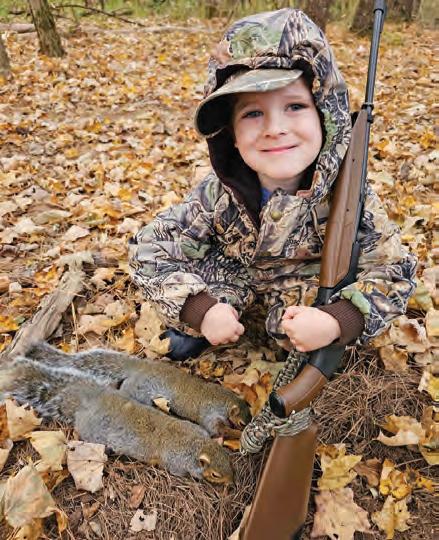
One of the main advantages of a .410 shotgun is its low recoil. Te .410 is known for being a “light” shotgun, meaning it doesn’t have the heavy kick associated with larger gauges. Tis is particularly important for young shooters, as it allows them to focus on learning proper shooting techniques without the fear of painful recoil, which can discourage continued practice.

Te over-under design also emphasizes safety. With its simple break-action mechanism, it’s easy
carried safely in the open position when not in use. Additionally, the .410’s limited range and pellet spread make it a good learning tool, encouraging kids to develop accuracy and precision.
Te versatility of the .410 makes it suitable for various types of hunting, from small game like squirrels and rabbits to clay target shooting. As a child’s skills and confdence grow, the .410 over-under shotgun can serve as a reliable and consistent companion, helping them build a strong foundation in shooting sports. Overall, it’s an excellent starter gun that balances ease of use with the challenge necessary to develop profciency.
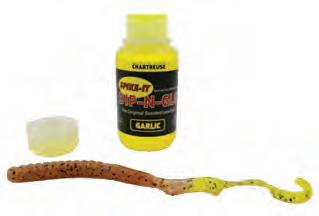


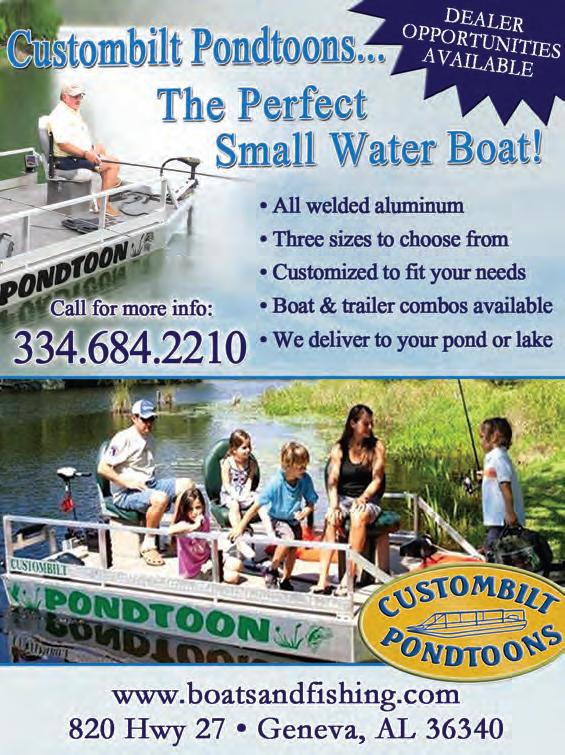
By Capt. Quinlyn Haddon

Throughout the month of October, the fishery in The Florida Keys will begin its autumn transition. This midway point between the drastic change of summer and winter fishing, can be unpredictable to forecast, but also provides exciting surprises during this overlap.
With cooler waters driving fish nearer to shore, reef and backcountry fishing will become more and more productive as we push into our winter fishery. The bait fish that particularly favor our shallower waters as the temperatures drop, will bring with them some of our favorite winter predators. Depending on the timeline of this seasonal change, we may begin to experience the return of sailfish and wahoo near our reef.
The anticipated temperature change of the water not only drives fish closer to shore, but is also a massive trigger for southbound migration. This is especially true for one of the ocean’s most notable vagrant; the swordfish. Fully understanding the habits of a fish that can migrate hundreds of feet up and down the water column each day, and thousands of miles each year,
can be a challenging endeavor. However, the data that has been collected on swordfish to date, has proven to be reasonably consistent.
The majority of mature swordfish, and particularly large breeding females, have been observed to spawn predominantly in the spring and summer. They favor warm waters with heavy currents for this process, which takes them as far south as the Caribbean sea. After abandoning their millions of eggs to the currents, they will begin an incredible migration in search of feeding grounds to sustain them repeating the process all over again.
Traveling thousands of miles up the coast, as far as Newfoundland, Canada, they seemingly utilize the continental shelf has a highway.
After gorging in these northern waters throughout the summer and early autumn, they then begin their return migration through our section of the swordfish highway, opportunistically feeding along the way.
While every month in the Florida Keys provides excellent opportunity to catch swordfish, this month gives us an extra bump on prevalence of larger swordfish migrating through our waters. The same is true for November as well, but with more chances of tackling windier days, October offers a more reliable forecast.
Catching swordfish is a great way to fill the box with a significant amount of quality meat. The yield of a single fish is more than enough to fill both your refrigerator, and when properly sealed, your freezer too. The unique flavor and texture of swordsteaks is sought after on its own, but there is always a chance that your catch is concealing an upgrade. In very rare instances, a swordfish’s meat will appear orange in color as opposed to the standard white. The quality of this meat is unparalleled, and is caused by the fish’s penchant for munching on shrimp. These special upgraded fish are referred to as pumpkin swordfish. How perfectly festive it would be to carve one of these this month.
The Florida Keys not only boasts an excellent fishery for swordfish, but can also get you there in about a 30 mile run offshore. This gives you a chance at a fish at a lifetime in half the time and cost of a west-coast grouper trip.
If this fish is on your bucket list, October in the Florida Keys presents a great opportunity to add that checkmark.
Capt. Quinlyn Haddon guides with Sweet E’nuf Charters out of Marathon, Florida Keys. Contact her at (504) 920-6342 or Captainquinlyn.com. Find her on social @captainquinlyn.







If your device has an LCD that has faded over time, or want to inquire about possible repair options for your unit, give us a call or visit our website!











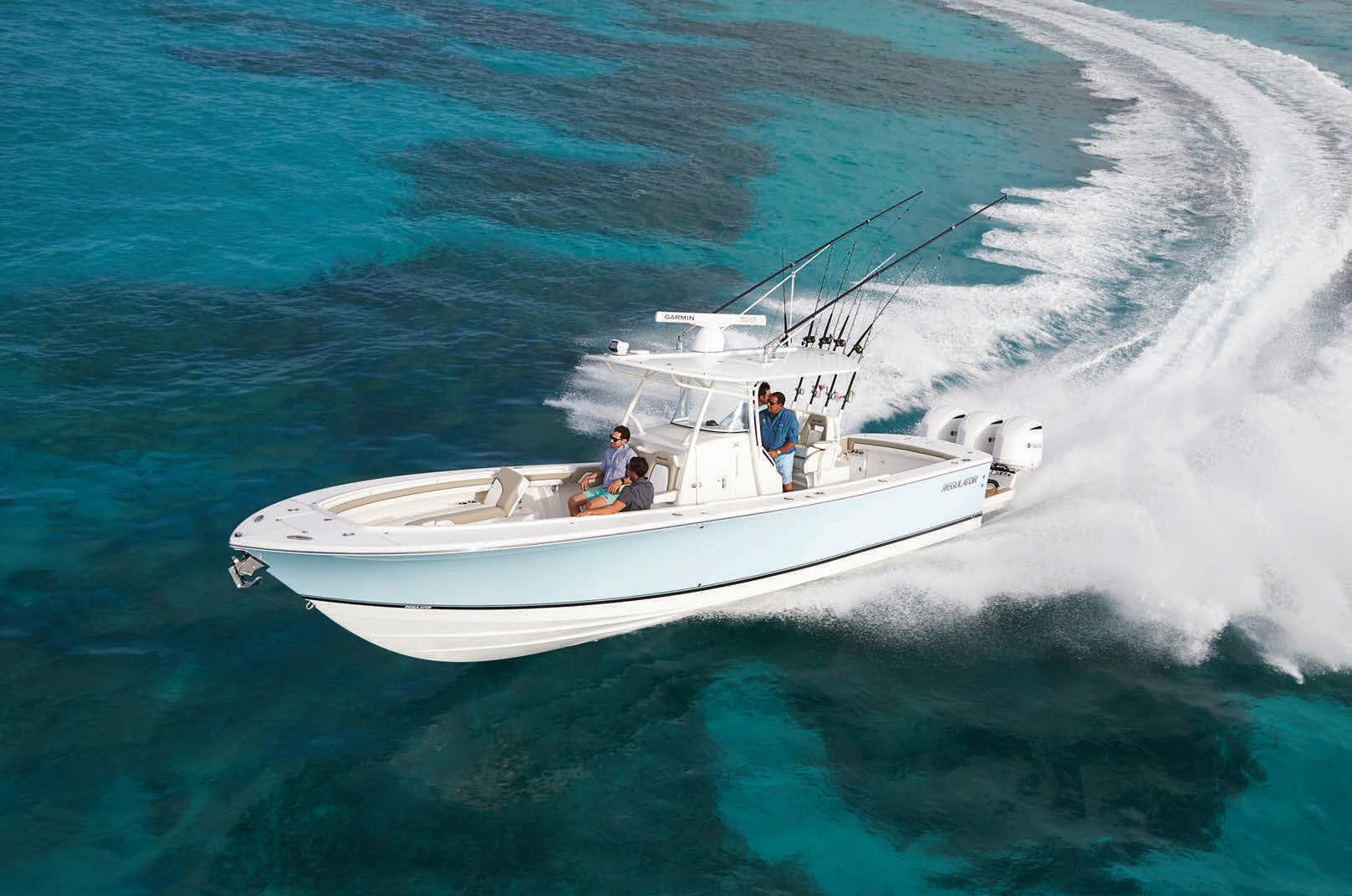




Boat Fix, a recreational boating telematics company that provides a combination of real time remote monitoring, GPS tracking, sophisticated geofencing, and 24/7 live customer support, announced today its Admiral Club Member sponsorship of the National Safe Boating Council (NSBC).
“At Boat Fix, safety is in our DNA and our goal is to promote safe, secure, and stress-free boating,” said Steve Pitsos, CEO, Boat Fix. “To support the NSBC at this level aligns with this vision. We are excited to be a part of the organization and thrilled to help them in their mission of advocating for a safer boating culture.”

“We are very grateful for the support of companies like Boat Fix,” said Peg Phillips, Executive Director, National Safe Boating Council. “Promoting safe boating takes constant education and outreach to the boating community. Only through the support of like-minded companies can we accomplish this vital mission.”
Boat Fix is more than a feet management and monitoring solution. As a tool for safer boating and boat ownership, the Boat Fix app sends real
time weather alerts and small craf advisories including wave height, visibility, and wind speeds based on the boat’s location; ofers geofence protection; safety checklists of U.S. Coast Guard required equipment including calendar reminders with fre extinguishers and fare expiration dates and helps ensure that the correct number of life jackets are on board to be worn; pre- and postdeparture checklists to help verify all systems are functioning properly; as well as remote


monitoring of battery voltage – including ultra-low, low- and high-voltage which is critical for preventing degradation of battery life and avoiding potential fres or explosions. In addition, the Boat Fix app provides advanced navigation with NOAA charts with detailed navigation marks and depths, rather than industrystandard Google Earth maps.
Users of the Boat Fix Pro app can communicate with the 24/7 Boat Fix team at the touch of a button, through voice, text, email, or two-way video chat to answer questions and diagnose issues on the water. Every call is answered in seconds, in person, by trained professionals ready and willing to help. Te industry-exclusive 24/7 Emergency Mechanical Helpline ensures boaters have immediate mechanical assistance over the phone if issues occur on the water. Te 24/7 Boat Fix Control Center also monitors unauthorized use and boat-thef prevention and can share your boat’s exact location with law enforcement.
Founded in 1958, the National Safe Boating Council serves as a national catalyst for developing a safe boating culture by providing educational resources, outreach programming, and training opportunities for industry partners and the boating community to infuence fun, safe, and responsible boating.
By Tracy Patterson

In the last decade, fshing has seen a signifcant transformation with the rise of female anglers. Once a male-dominated activity, more women are now not only participating but also excelling, reshaping the fshing community and breaking down stereotypes.
According to the Recreational Boating & Fishing Foundation (RBFF), the number of female anglers in the U.S. has increased by nearly 20% over the past ten years. In 2020, around 17 million women fshed, making up nearly 40% of all anglers. Tis shif refects broader changes in societal attitudes toward women in traditionally male-dominated activities.
Female anglers are challenging long-standing stereotypes. Fishing, ofen seen as a rugged, solitary pursuit for men, is proving to be a universal activity. Women are demonstrating that anyone can enjoy fshing, regardless of gender.
Social media has been crucial in this shif. Platforms like Instagram and YouTube have allowed female anglers to share their experiences and successes with a global audience. Infuential anglers like April Vokey and Kristine Fischer are showing that women can excel in all aspects of the sport, encouraging more women to try fshing.
Te fshing industry has responded by creating more inclusive products and marketing campaigns. Companies now design gear specifcally tailored to women, such as fshing rods with smaller grips and clothing lines that blend functionality with style. Brands are also increasingly featuring women in their advertising, making fshing more accessible and inclusive.
Te rise of female anglers has also had positive social and environmental impacts. Women who fsh ofen involve their families, leading to an increase in family fshing trips and fostering a love for the outdoors in the next generation. Additionally, women are playing a key role in conservation eforts, advocating for sustainable fshing practices and protecting aquatic habitats.
Organizations like Casting for Recovery are empowering women through fshing, ofering programs that combine the sport with wellness and community-building activities. Tese initiatives introduce more women to fshing while promoting physical and mental well-being.
As more women continue to enter the sport, they inspire further innovation and inclusivity within the fshing community. Te rise of female anglers is a testament to the power of diversity and the enduring appeal of fshing as a sport for everyone.




